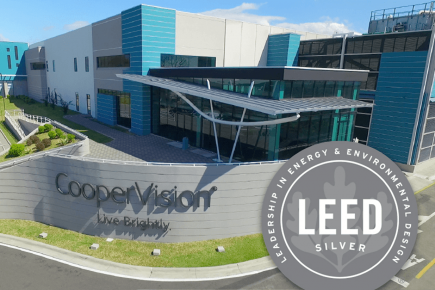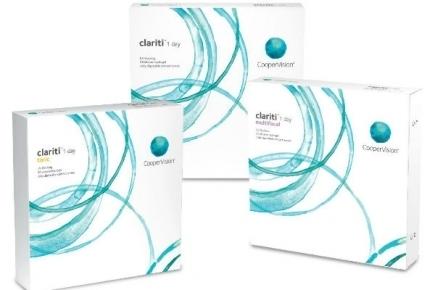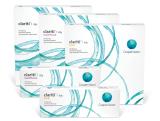What is CooperVision’s approach to sustainability?
At CooperVision, we are taking action to make a positive impact on the environment and expand our commitment to sustainability because it is the right thing to do—for our employees, our customers, our business, and our planet—with a focus on water, energy, recycling, and people. Our approach is evolutionary, continually evaluating, innovating and improving to make an impact today and in the future.
At our manufacturing sites around the world, we have developed best-in-class processes resulting in our facilities earning prestigious sustainability certifications, including LEED® Certification in Costa Rica, Puerto Rico,and BREEAM Certification in the U.K. On average, more than 95% of the materials in our production process are recycled. We are also proud to report that as part of an organizational effort to use renewable resources wherever possible, all of our operations in New York State and Mountpark UK are powered by renewable energy.
For more information, visit coopervision.ca/sustainability.
Can you tell us more about the sustainable processes used to make clariti® 1 day?
CooperVision’s 100,000-square-foot facility in Alajuela, Costa Rica is dedicated to the manufacturing of clariti® 1 day, and has been awarded the prestigious LEED® Silver certification for its environmentally conscious design and operation, which includes:
- A high-efficiency lighting system using natural light
- A vegetable oil-powered main transformer
- Rainwater collection tanks that divert natural rainfall for use in lavatories and climate control systems
- More than 95% of materials used in the production process – including 100% of the plastic generated – is recycled
- More than 95% of the plant’s electricity comes from renewable sources
Similarly, we have instituted more sustainable practices at our clariti® 1 day production facility near Budapest, Hungary. These include recycling materials such as molds used in the production process, reuse of cardboard containers prior to recycling and encouraging our employees to use public transportation (more than 70 percent do so in Hungary and Costa Rica).

Across our facilities, as part of empowering our people, employees contribute their time to community improvement efforts (e.g., international coastal clean-up programs and partnerships with schools that teach the importance of recycling and conservation). In some cases, we have inspired eye care professionals to rethink their own environmental footprints and take action. Our teams also take a digital-first approach to communication with customers, reducing resources that would otherwise be used for printing, storage and transportation of physical materials. No matter the country or site, we are continuously evaluating additional ways to make a positive impact on the environment.
What is the proper way to dispose of contact lenses?
CooperVision advises that wearers not place contact lenses into drainage systems, and recommend they follow the guidance of their local sanitation authorities for disposal.
Plastic Neutral Initiative (Phase 1)
Plastic Neutrality:
clariti® 1 day is the first net plastic neutral contact lens. What does that mean?
Net plastic neutrality is established by purchasing credits from Plastic Bank. A credit represents the collection and conversion of one kilogram of plastic that may reach or be destined for waterways. CooperVision purchases credits equal to the weight of plastic in clariti® 1 day orders in a specified time period. clariti® 1 day plastic is determined by the weight of plastic in the blister, the lens, and the secondary package, including laminates, adhesives, and auxiliary inputs (e.g. ink). This action makes clariti® 1 day the first net plastic neutral2 contact lens in Canada.
How is net plastic neutrality calculated?
To determine the weight of clariti® 1 day plastic, CooperVision examined all the plastic that leaves our manufacturing and operations facilities destined for final use by the wearer, based on Canada sales and distribution. We’ve diligently reviewed the plastic content of clariti® 1 day, including the blister, the lens itself, secondary packaging plastic laminates, and additional auxiliary plastics, including laminates in the blister foil, plastic in adhesive and the plastics included in the ink printed on the boxes.
What products are included in CooperVision’s net plastic neutrality commitment?
The full clariti® 1 day family in Canada., including associated customer brands:
- clariti® 1 day sphere
- clariti® 1 day toric
- clariti® 1 day multifocal
- Mediflex Elite 1-Day
- Ray-Ban 1 Day
- Pearle Vision 1Day
- Mediflex Elite 1-Day Toric
- Ray-Ban 1 Day Toric
- Pearle Vision 1Day for Astigmatism
- Mediflex Elite 1-Day Multifocal
- Ray-Ban 1 Day Multifocal
- Pearle Vision 1Day Multifocal

How will CooperVision report on its progress?
We expect to regularly provide public updates and look forward to sharing more information as the
impact of the initiative grows over time.
Will your sustainability efforts stop at plastic neutrality?
Plastic neutrality is not an endpoint; it is the next step in CooperVision’s journey in continuing to make a difference for the planet. We will continue to seek advice and input from colleagues, scientists, and researchers as we work to make a positive impact across CooperVision’s portfolio, strengthening our stance on the importance of sustainability.
More information on the clariti® 1 day plastic neutral initiative—including tools and materials you can use in your practice—are available at one-day-better.ca. We’ll continue to roll out additional resources in the coming weeks and months, so check back regularly.
Additional details surrounding CooperVision’s commitment to sustainability are summarized at coopervision.com/sustainability.
Plastic Bank
Plastic Bank® is a social enterprise building ethical recycling ecosystems in coastal communities that reprocesses the materials for reintroduction into the global supply chain. Collectors receive a premium for the materials they collect, which helps them provide basic family necessities such as groceries, cooking fuel, school tuition, and health insurance
Ocean-bound plastic is collected within 50km of waterways or coastal areas.
What can be made from the plastics collected and converted by Plastic Bank®?
After being collected the plastic is recycled and processed into new raw material feedstock called Social Plastic which can be purchased by manufacturers to produce more environmentally and socially ethical products. This completes the plastic loop, creating a sustainable, circular economy.
Definitions
Plastic
A synthetic material made from linking monomers through a chemical reaction to create a polymer chain that can be molded or extruded at high heat into various solid forms that retain their defined shapes.
Social plastic
While all Social Plastic is recycled plastic, not all recycled plastic is Social Plastic. This is because - in addition to being environmentally friendly - Social Plastic provides a social benefit: impoverished communities gain access to stable income, local economies are boosted, and life necessities, such as food, water, and electricity, become more accessible
Ocean-Bound Plastic
Ocean-bound plastic is post-consumer plastic collected within 30 miles of an ocean or a waterway leading to an ocean, in countries with high volumes of uncollected plastic waste, which has been discarded or would otherwise be discarded into the environment.
[1] clariti® 1 day is defined as orders and includes clariti® 1 day sphere, clariti® 1 day toric, and clariti® 1 day multifocal product sold & distributed by CooperVision in Canada. Net plastic neutrality is established by purchasing credits from Plastic Bank. A credit represents the collection and conversion of one kilogram of plastic that may reach or be destined for waterways. CooperVision purchases credits equal to the weight of plastic in clariti® 1 day orders in a specified time period. clariti® 1 day plastic is determined by the weight of plastic in the blister, the lens, and the secondary package, including laminates, adhesives, and auxiliary inputs (e.g. ink). REFERENCE: CVI data on file 2020. Sustainability report, clariti® 1 day. FOOTNOTE: Based on top 4 global contact lens manufacturers.
[3] Source: https://plasticbank.com/faq & https://www.windex.com/en-us/help-seas-sparkle
[4] Source: https://plasticbank.com/faq







